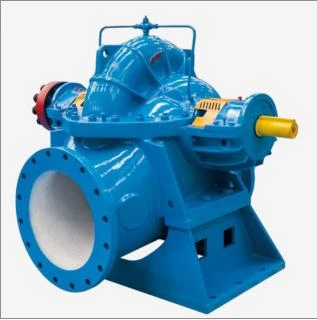Galician
- Afrikaans
- Albanian
- Amharic
- Arabic
- Armenian
- Azerbaijani
- Basque
- Belarusian
- Bengali
- Bosnian
- Bulgarian
- Catalan
- Cebuano
- Corsican
- Croatian
- Czech
- Danish
- Dutch
- English
- Esperanto
- Estonian
- Finnish
- French
- Frisian
- Galician
- Georgian
- German
- Greek
- Gujarati
- Haitian Creole
- hausa
- hawaiian
- Hebrew
- Hindi
- Miao
- Hungarian
- Icelandic
- igbo
- Indonesian
- irish
- Italian
- Japanese
- Javanese
- Kannada
- kazakh
- Khmer
- Rwandese
- Korean
- Kurdish
- Kyrgyz
- Lao
- Latin
- Latvian
- Lithuanian
- Luxembourgish
- Macedonian
- Malgashi
- Malay
- Malayalam
- Maltese
- Maori
- Marathi
- Mongolian
- Myanmar
- Nepali
- Norwegian
- Norwegian
- Occitan
- Pashto
- Persian
- Polish
- Portuguese
- Punjabi
- Romanian
- Russian
- Samoan
- Scottish Gaelic
- Serbian
- Sesotho
- Shona
- Sindhi
- Sinhala
- Slovak
- Slovenian
- Somali
- Spanish
- Sundanese
- Swahili
- Swedish
- Tagalog
- Tajik
- Tamil
- Tatar
- Telugu
- Thai
- Turkish
- Turkmen
- Ukrainian
- Urdu
- Uighur
- Uzbek
- Vietnamese
- Welsh
- Bantu
- Yiddish
- Yoruba
- Zulu
Telephone: +86 13120555503
Email: frank@cypump.com
Out . 19, 2024 05:54 Back to list
slurry pump components
Understanding Slurry Pump Components An Essential Guide
Slurry pumps are vital in various industries, particularly those dealing with mining, construction, and wastewater management, where the movement of mixtures of liquids and solids, known as slurries, is necessary. The effectiveness and efficiency of slurry pumps largely depend on their components. A thorough understanding of these parts can help in selecting the right pump and maintaining it for optimal performance.
1. Pump Casing
The pump casing is the outer shell that protects the internal components of the slurry pump. Typically made from durable materials like cast iron or stainless steel, its design is crucial because it houses the main functional parts while providing structural integrity. The shape of the casing is usually volute, which helps in converting the kinetic energy of the slurry into pressure, essential for effective transfer. The casing's durability prevents wear due to the abrasive nature of slurries, prolonging the pump's lifespan.
2. Impeller
The impeller is arguably the most critical component of a slurry pump. This rotating part is responsible for imparting energy to the slurry, facilitating its movement through the pump and out to the pipeline. Impellers can be of various types, such as open, semi-open, or closed, depending on the specific application and the characteristics of the slurry. The design and material of the impeller are tailored to withstand erosion and wear, ensuring efficient operation even with abrasive particles within the slurry.
3. Suction and Discharge Chambers
The suction chamber is where the slurry enters the pump. Its design is crucial for ensuring that the pump can efficiently draw in the slurry without cavitation. The discharge chamber is where the pump expels the slurry after it has been processed. Both chambers must be designed to minimize pressure losses and allow for smooth flow transitions, supporting the overall flow rate and efficiency of the pump.
4. Wear Parts
slurry pump components

Given that slurry contains abrasive materials, wear parts are subject to significant wear and tear. Typical wear parts include the impeller, casing liners, and other internal components that come into contact with the slurry. These parts are often made from materials tailored for high wear resistance, like rubber, polyurethane, or high-chrome alloys. Regular inspection and timely replacement of wear parts are essential to maintain pump performance and prevent breakdowns.
5. Mechanical Seal
The mechanical seal is crucial for ensuring the slurry does not leak from the pump, which could lead to significant operational issues and environmental concerns. The seal prevents the slurry from escaping along the shaft, maintaining efficiency and safety. There are various sealing technologies available, each suited for different types of applications and operating conditions.
6. Drive System
Most slurry pumps are powered by electric motors, though many may also utilize diesel engines or hydraulic drives, depending on the location and application requirements. The drive system is responsible for turning the impeller and thus enabling the movement of the slurry. Proper alignment and maintenance of the drive components are essential to ensure the pump operates smoothly and efficiently.
7. Support Bearings
Support bearings play a crucial role in stabilizing the rotating components of the pump. Their function is vital as they reduce friction and wear, allowing the impeller to turn freely. Proper lubrication and maintenance of these bearings are necessary to prevent premature failure, which could lead to significant downtime.
Conclusion
Understanding the components of slurry pumps is essential for anyone involved in industries that require the transportation of slurries. From the robust casing and efficient impellers to the critical wear parts and drive systems, each component plays a vital role in the pump's performance. Regular maintenance and timely replacement of parts can help optimize the efficiency of slurry pumps, reduce operational costs, and extend their lifespan. By ensuring that all components are in good condition, industries can minimize downtime and maximize productivity in their slurry handling processes.
-
High-Performance Air Pumps for Sand & Gravel | Efficient Transport
NewsAug.03,2025
-
ISG Series Vertical Pipeline Pump - Chi Yuan Pumps Co., LTD.|Energy Efficiency, Corrosion Resistance
NewsAug.03,2025
-
ISG Series Pipeline Pump - Chi Yuan Pumps | Energy Efficiency&Compact Design
NewsAug.03,2025
-
ISG Series Vertical Pipeline Pump - Chi Yuan Pumps Co., LTD.|High Efficiency, Low Noise, Durable
NewsAug.02,2025
-
ISG Series Vertical Pipeline Pump - Chi Yuan Pumps | High Efficiency, Low Noise
NewsAug.02,2025
-
ISG Series Vertical Pipeline Pump- Chi Yuan Pumps Co., LTD.|High Efficiency&Compact Design
NewsAug.02,2025










